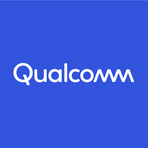Xreal's Project Aura: A New Dawn in Extended Reality
May 22, 2025, 3:47 pm
Google
Location: United States, New York
In the world of technology, the race is on. A new player has entered the arena, and its name is Xreal. This Chinese company, backed by Alibaba, has just unveiled Project Aura, a pair of extended reality (XR) glasses that run on Google’s Android XR operating system. This launch is not just a product reveal; it’s a strategic move in a high-stakes game against tech giants like Meta and Apple.
Imagine a future where the lines between the digital and physical worlds blur. That’s the promise of XR. It’s a realm where virtual experiences enhance our reality. Xreal’s Project Aura aims to be a key player in this emerging landscape. With its lightweight design and tethered functionality, these glasses are poised to redefine how we interact with technology.
The launch took place at the Google I/O conference, a stage set for innovation. Here, Xreal announced its partnership with Google, marking a significant milestone for the Android XR platform. This collaboration is a marriage of hardware and software, combining Xreal’s expertise in lightweight XR devices with Google’s robust operating system. The result? A device that could change the way we perceive augmented reality.
Project Aura is not just another gadget. It’s an optical see-through (OST) device, a term that sounds technical but means something simple: you can see the real world while interacting with digital elements. This feature sets it apart from traditional VR headsets, which often isolate users from their surroundings. With Project Aura, users can engage with their environment while still enjoying immersive digital experiences.
The technology behind these glasses is impressive. They are powered by Qualcomm’s Snapdragon XR chipsets, designed specifically for spatial computing. This partnership ensures that Project Aura will deliver high-performance experiences. It’s like having a sports car engine in a compact vehicle—powerful yet efficient.
But what does this mean for consumers? For starters, it opens the door to a new ecosystem of applications. Developers are being called to action, encouraged to create innovative apps that leverage the capabilities of Project Aura. The potential is vast. Imagine using these glasses for navigation, gaming, or even remote collaboration. The possibilities are limited only by the imagination.
Xreal’s previous products have shown promise, but Project Aura represents a leap forward. The company has always pushed the boundaries of XR hardware. Now, with Google’s backing, it’s set to take that vision to new heights. This collaboration is not just about technology; it’s about creating a user-friendly experience that integrates seamlessly into daily life.
The timing of this launch is crucial. As Meta continues to develop its Ray-Ban product and Apple gears up for its own XR offerings, competition is fierce. Xreal’s entry into the market adds another layer of complexity. It’s a chess game, and every move counts. By aligning with Google and Qualcomm, Xreal positions itself as a formidable contender.
Yet, the road ahead is not without challenges. The market for XR devices is still in its infancy. Consumer adoption will depend on several factors, including price, usability, and the quality of available applications. Xreal has yet to disclose pricing or a release timeline for Project Aura. This uncertainty could be a double-edged sword. On one hand, it builds anticipation; on the other, it leaves room for competitors to seize the moment.
Moreover, the success of Project Aura hinges on the developer community. A rich ecosystem of applications is essential for any operating system’s success. Google knows this well. By encouraging developers to create for Android XR, they are laying the groundwork for a vibrant marketplace. The more apps available, the more appealing the platform becomes.
As we look to the future, Project Aura represents a pivotal moment in the evolution of XR technology. It’s a step toward a world where digital experiences enhance our reality rather than replace it. This is not just about glasses; it’s about a new way of seeing the world.
In conclusion, Xreal’s Project Aura is more than a product launch. It’s a bold statement in the tech landscape. With its lightweight design, advanced technology, and strategic partnerships, it aims to carve out a niche in the competitive XR market. As the lines between the digital and physical worlds continue to blur, Project Aura could be the key to unlocking new experiences. The future is here, and it’s looking bright.
Imagine a future where the lines between the digital and physical worlds blur. That’s the promise of XR. It’s a realm where virtual experiences enhance our reality. Xreal’s Project Aura aims to be a key player in this emerging landscape. With its lightweight design and tethered functionality, these glasses are poised to redefine how we interact with technology.
The launch took place at the Google I/O conference, a stage set for innovation. Here, Xreal announced its partnership with Google, marking a significant milestone for the Android XR platform. This collaboration is a marriage of hardware and software, combining Xreal’s expertise in lightweight XR devices with Google’s robust operating system. The result? A device that could change the way we perceive augmented reality.
Project Aura is not just another gadget. It’s an optical see-through (OST) device, a term that sounds technical but means something simple: you can see the real world while interacting with digital elements. This feature sets it apart from traditional VR headsets, which often isolate users from their surroundings. With Project Aura, users can engage with their environment while still enjoying immersive digital experiences.
The technology behind these glasses is impressive. They are powered by Qualcomm’s Snapdragon XR chipsets, designed specifically for spatial computing. This partnership ensures that Project Aura will deliver high-performance experiences. It’s like having a sports car engine in a compact vehicle—powerful yet efficient.
But what does this mean for consumers? For starters, it opens the door to a new ecosystem of applications. Developers are being called to action, encouraged to create innovative apps that leverage the capabilities of Project Aura. The potential is vast. Imagine using these glasses for navigation, gaming, or even remote collaboration. The possibilities are limited only by the imagination.
Xreal’s previous products have shown promise, but Project Aura represents a leap forward. The company has always pushed the boundaries of XR hardware. Now, with Google’s backing, it’s set to take that vision to new heights. This collaboration is not just about technology; it’s about creating a user-friendly experience that integrates seamlessly into daily life.
The timing of this launch is crucial. As Meta continues to develop its Ray-Ban product and Apple gears up for its own XR offerings, competition is fierce. Xreal’s entry into the market adds another layer of complexity. It’s a chess game, and every move counts. By aligning with Google and Qualcomm, Xreal positions itself as a formidable contender.
Yet, the road ahead is not without challenges. The market for XR devices is still in its infancy. Consumer adoption will depend on several factors, including price, usability, and the quality of available applications. Xreal has yet to disclose pricing or a release timeline for Project Aura. This uncertainty could be a double-edged sword. On one hand, it builds anticipation; on the other, it leaves room for competitors to seize the moment.
Moreover, the success of Project Aura hinges on the developer community. A rich ecosystem of applications is essential for any operating system’s success. Google knows this well. By encouraging developers to create for Android XR, they are laying the groundwork for a vibrant marketplace. The more apps available, the more appealing the platform becomes.
As we look to the future, Project Aura represents a pivotal moment in the evolution of XR technology. It’s a step toward a world where digital experiences enhance our reality rather than replace it. This is not just about glasses; it’s about a new way of seeing the world.
In conclusion, Xreal’s Project Aura is more than a product launch. It’s a bold statement in the tech landscape. With its lightweight design, advanced technology, and strategic partnerships, it aims to carve out a niche in the competitive XR market. As the lines between the digital and physical worlds continue to blur, Project Aura could be the key to unlocking new experiences. The future is here, and it’s looking bright.

